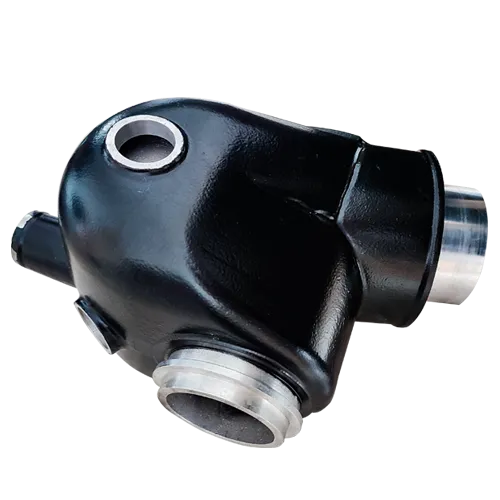Mobile:+86-311-808-126-83
Email:info@ydcastings.com
Cast Iron Pipe Connections - Expert Guide & Solutions
Understanding Cast Iron Pipe Connections
Cast iron pipes have long been a staple in plumbing and construction due to their durability, strength, and resistance to corrosion. Historically, they have been used for a variety of applications, including drainage, waste management, and even in certain water supply systems. One of the critical aspects of working with cast iron pipes is understanding how to make secure and effective connections between them.
Types of Connections
There are several methods for connecting cast iron pipes, each with its unique benefits and drawbacks. The most common connection methods include
1. Bell and Spigot Connections This traditional method involves a bell-shaped end on one pipe that fits over the spigot end of another. A rubber gasket or lead packing may provide a seal. This type of connection is favored for its reliability and ease of installation.
2. Mechanical Joints These joints utilize a metal or rubber gasket and bolts to create a tight seal. They are particularly useful when adjustments or disassembly may be required, making them a popular choice in both new installations and repairs.
3. Flanged Connections Flanges can be welded or bolted to the ends of pipes, allowing for easy alignment and secure fastening. Though slightly more complicated to install, flanged connections are favored in applications where pipes are frequently moved or serviced.
4. Cement and Mortar Joints In certain scenarios, especially in municipal settings, cast iron pipes are connected using cement or mortar. This method provides a strong bond but may be less flexible than other types of joints, which can lead to issues if movement occurs.
Installation Considerations
cast iron pipe connections

When making connections with cast iron pipes, several factors must be taken into account to ensure a successful installation
- Alignment Pipes must be accurately aligned during installation to prevent undue stress and potential failure at the joints
.- Support and Load-Bearing Proper support must be provided for the pipes to avoid sagging and misalignment, particularly in longer runs or when dealing with heavy loads.
- Expansion and Contraction Like all materials, cast iron pipes may expand or contract with temperature fluctuations. Installing expansion joints can help accommodate these changes and prevent cracking or separation.
- Cleaning and Preparation Before making connections, it is essential to clean the ends of the pipes thoroughly to remove any debris, rust, or old sealing material. This ensures a proper seal and prevents leaks.
Maintenance and Inspection
Regular maintenance and inspection of cast iron pipe connections are essential to prolonging their lifespan and ensuring system integrity. Leaks at connections can lead to significant issues, including water damage, contamination, and costly repairs. Routine checks should include looking for signs of corrosion, misalignment, or signs of wetness around connections.
Conclusion
Cast iron pipe connections play a vital role in the durability and functionality of plumbing systems. Understanding the different connection methods and ensuring proper installation and maintenance can significantly enhance the performance and longevity of cast iron piping systems. Whether in residential, commercial, or industrial applications, the integrity of these connections is crucial for effective water management and infrastructure reliability.
-
Why Should You Invest in Superior Pump Castings for Your Equipment?NewsJun.09,2025
-
Unlock Performance Potential with Stainless Impellers and Aluminum End CapsNewsJun.09,2025
-
Revolutionize Your Machinery with Superior Cast Iron and Aluminum ComponentsNewsJun.09,2025
-
Revolutionize Fluid Dynamics with Premium Pump ComponentsNewsJun.09,2025
-
Optimizing Industrial Systems with Essential Valve ComponentsNewsJun.09,2025
-
Elevate Grid Efficiency with High-Precision Power CastingsNewsJun.09,2025











